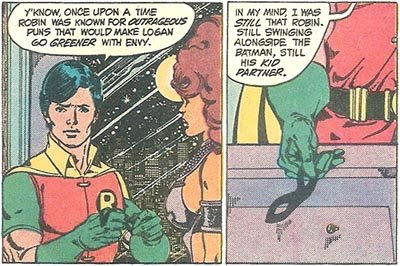Popular! I’ll Help You Be Popular!
Josie Leavitt at Shelftalker recently wrote about young customers asking for books that they know are popular, but--she suspects--won't hold any other interest for them:
School let out on Friday and since then I've had four nine-year-old girls ask for one or more books in the Twilight series by Stephenie Meyer. Now, don't get me wrong, I think Twilight is a fine series. I enjoyed it immensely when I read it. I am forty-four, not nine. I'm not sure what to do with this current phenomenon. I don't like to judge purchases by anyone in my store, but this troubles me.
Because Twilight is so popular, and perhaps even a marker of maturity.
These bouncy, pigtailed nine-year-olds seem to have no reason to read these books other than "my friends are reading it." They don't even like boys. I find asking them "Do you like boys?" is a great weeding-out question for some of the younger set. A giggle, and a sheepish "no" can usually sway them away from any book, except Twilight.
This reminds me of a story I read on the Child_Lit email list a coupla years ago. A school librarian had noticed that a bunch of young boys were taking out different Harry Potter books each week. She knew their reading skills weren't up to finishing those books, certainly not at the speed they circulated. The boys just wanted to have the popular books in their hands.
She heard those boys sitting around a table, discussing the books. Not what they had read, of course. No, they were comparing size: "I've got the biggest one." Girls might compete to be the most mature, but boys compete to be the biggest.
Of course, we book-lovers outgrow the need to be seen reading the popular titles, right? Mature book bloggers would never be racing to announce that they've already read Catching Fire, would they?

 With some Googling, I discovered that the tradition also exists in the form of a "Vocabulary Parade," as in this example from Alpharetta, Georgia,
With some Googling, I discovered that the tradition also exists in the form of a "Vocabulary Parade," as in this example from Alpharetta, Georgia, 
 Punning became a trait and symbol of Dick Grayson's
Punning became a trait and symbol of Dick Grayson's  As the panel to the right shows, scripter
As the panel to the right shows, scripter  The next Robin, Tim Drake, was also more serious than Dick Grayson. But instead of angry, he was endearingly uptight. As his comrade and occasional girlfriend Spoiler notes in the panel to the left, when Tim acts tough and shoots off snappy jokes like Dick, it comes across as trying too hard.
The next Robin, Tim Drake, was also more serious than Dick Grayson. But instead of angry, he was endearingly uptight. As his comrade and occasional girlfriend Spoiler notes in the panel to the left, when Tim acts tough and shoots off snappy jokes like Dick, it comes across as trying too hard. Meanwhile, yet another Robin made his debut this month, little Damian Wayne. As I've
Meanwhile, yet another Robin made his debut this month, little Damian Wayne. As I've 

 This
This  I link that pattern to
I link that pattern to  The latest Batman comic books, appearing this month, feature a
The latest Batman comic books, appearing this month, feature a  Robin's puns were so obvious, in fact, that within a few years of his debut in 1940, other characters were commenting on that habit. And once wordplay became an explicit part of his characterization, other writers had to continue the pattern.
Robin's puns were so obvious, in fact, that within a few years of his debut in 1940, other characters were commenting on that habit. And once wordplay became an explicit part of his characterization, other writers had to continue the pattern.















